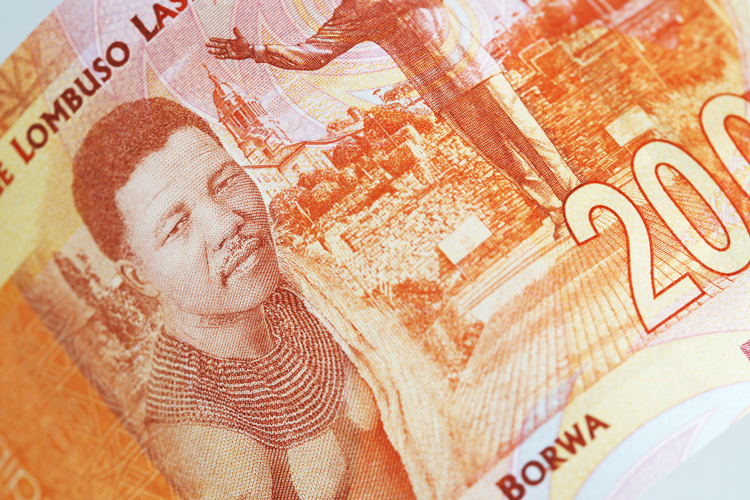How South Africa is celebrating 100 years of Nelson Mandela through special banknotes
De La Rue has designed five new notes to commemorate the centenary of Mandela’s birth, which tell the story of the anti-apartheid revolutionary’s life through images.

A series of commemorative banknotes celebrating the centenary of Nelson Mandela’s birth have been released in South Africa, which look to show “the journey of a nation as of the man”.
Mandela, South Africa’s anti-apartheid radical who fought for black rights and later president of the country, was born on 18 July 1918, in Mvezo. He died five years ago on 5 December 2013 in Johannesburg, aged 95.
This year would be his 100th birthday, and the South African Reserve Bank (SARB) set about issuing a set of banknotes which would educate citizens about the various stages in Mandela’s life, and the fight to abolish racial segregation in the country.
Five special edition notes

UK-based banknote design and manufacturing studio De La Rue was commissioned to create the imagery for the special edition banknotes, which use the existing currency’s frameworks, layout, print layers and colour palette, so that they would assimilate more easily into circulation. The studio also worked with the South African State Printworks to print the notes.
“We used the existing note framework for two reasons,” says Julian Payne, head of design at De La Rue. “The special notes are going into circulation with the current series, which also feature Mandela, so keeping similarities helps with public authentication and education, and it also sped up the process, which was essential given the short timeline of the project.”
The design project, which involved coming up with concepts and imagery and engraving the artwork, took De La Rue roughly 18 months, which is “fast for a new series”, Payne adds.
The commemorative note style has been applied to South African rand, and has been applied to 10, 20, 50, 100 and 200-rand notes.
Scenes showing Mandela’s transformation from “boy to president”

Different imagery has been designed for each of the five notes, which look to chronologically “tell the story of Mandela’s life from a young boy through to president of South Africa”, says Payne.
These vignettes – faded, scenic images – feature on the back of the notes, focusing on the life events of Mandela, including Mvezo (“Birth”), Soweto (“Life”), Howick (“Capture”), Robben Island (“Struggle”) and Union Buildings (“Destiny”).
Care was also taken to consider the colours of the notes, and how this would relate to the various scenarios.
For example, the grassland of Mvezo, in the Eastern Cape and Mandela’s birthplace, is represented through green on the 10-rand note, while the more urban setting of the Soweto township where Mandela lived later in life, is captured through brown for the 20-rand note, and the sea around Robben Island, where Mandela was imprisoned, is represented through blue on the 100-rand note.
The back of the notes also feature a more “youthful” portrait of Mandela, says Payne, to contrast with the “older statesmen” image of him on the front of the note, which graces the regular South African banknotes too.
Security features nod to the leader

The front of the note features more “subtle” changes including the denomination of the bank note in the lower-right-hand corner, printed in a special, colour-changing security ink that carries the pattern of Mandela’s famous shirts, and a seven-bar circle that frames Mandela’s portrait image. This aims to represent the bars seen on the post-apartheid South African national flag, and the seven bars on the door of Mandela’s prison cell at Robben Island. These bars also contain ultraviolet (UV) light technology, another security feature.
“Our concept art really impressed the SARB, because it pointed a way to be quite radical within the existing note framework,” says Payne. “Often, commemorative notes will only include a subtle change like a new logo or title. For South Africa, we completely redesigned the vignettes for the backs, replacing the current scenes with the story of Mandela’s life.”
“The journey of a nation”

Payne adds that the designs aim to resonate with and inform South African citizens, not only about Mandela’s life, but about the story that shaped the country’s political and cultural identity.
“South Africa wanted to celebrate Mandela’s centenary,” he says. “But while he will always be the figurehead and focal point, what his generation struggled to achieve was remarkable. The notes are as much about the journey of a nation as of the man.”
The commemorative Nelson Mandela centenary notes are legal tender and have now entered circulation in South Africa. They will run at the same time as the usual notes, and will continue to be used until wear and tear means they “no longer meet circulation quality standards of the SARB”, says Payne. “The SARB also expects many South Africans will collect and keep them,” he adds.
-
Post a comment




